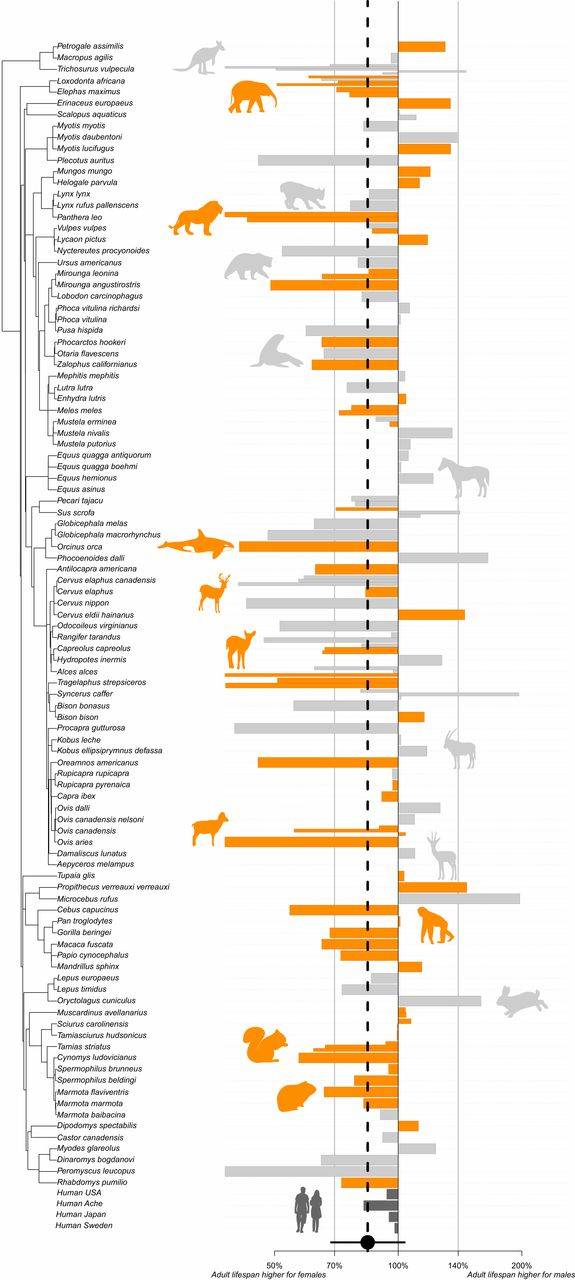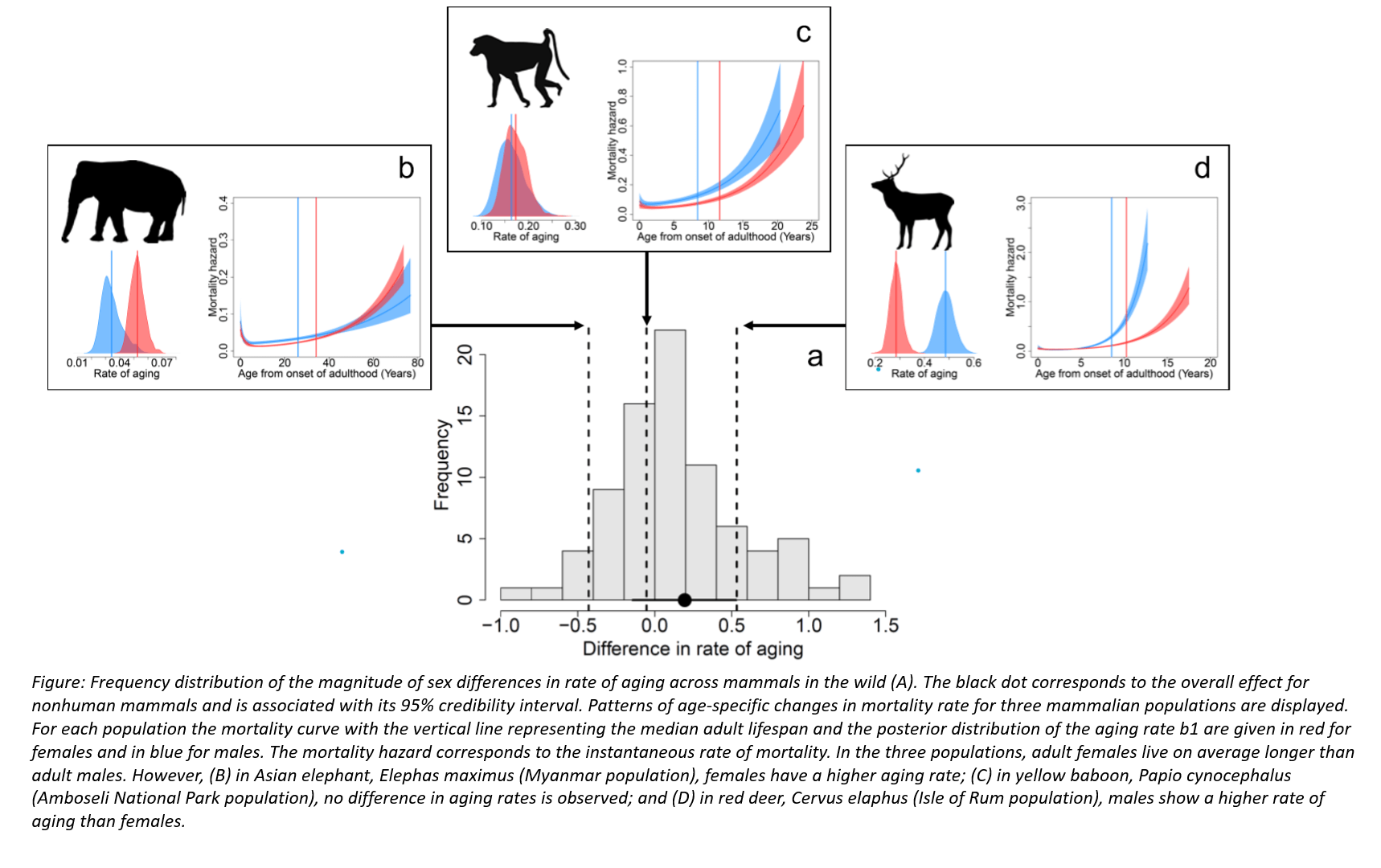In human populations, women live longer than men. While it is commonly assumed that this pattern of long-lived females vs. short-lived males constitutes the rule in mammals, the magnitude of the sex differences in lifespan and increase of mortality rate with advancing age remains to be quantified.

Figure: Sex differences in adult lifespan across mammals. For a given population, the sex difference is measured as the ratio log[(Male adult lifespan)/(Female adult lifespan)]. Multiple bars for a given species represent estimates gathered from different populations. Orange bars correspond to longitudinal data, gray bars correspond to transversal data, and dark gray bars correspond to the human populations. The black dot corresponds to the overall effect for nonhuman mammals and is associated with its 95% credibility interval.
In the paper, “Sex differences in adult lifespan and aging rates of mortality across wild mammals” published in the journal Proceedings of the National Academy of Sciences (PNAS), demonstrates that, in the wild, mammalian females live longer than males but that sex differences in aging rates were not detected. Contrary to a widespread hypothesis, the research demonstrates that sex differences in life history strategies do not detectably influence the magnitude of sex differences in either lifespan or aging rates. Instead, the findings suggest these differences are predominantly shaped by complex interactions between local environmental conditions and sex-specific reproductive costs.
The research was led by Jean-François Lemaître, French National Centre for Scientific Research / Biometry and Evolutionary Biology laboratory (LBBE), University of Lyon, together with 13 co-authors, including Species360 Director of Science, Prof. Dalia A. Conde.
This project is part of the Sex Differences in Species Survival Working Group, an interdisciplinary team that is extending the analyses in this publication to understand sex differences in lifespan in the wild and under human care for mammals, birds, reptiles and amphibians, to better inform population management. Because ex situ populations do not exhibit the same effects from the environment to wild populations, the study aims to unravel some of the evolutionary drivers of sex differences in survival. Data on lifespan of ex situ populations is curated and shared by more than 1,200 Species360 member institutions in 99 countries using the Zoological Information Management System (ZIMS).
Read the full article here.








